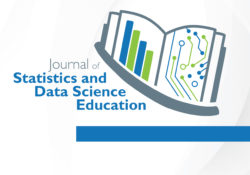eric.ed.gov har udgivet: Within a response to intervention system of teaching and learning, important instructional decision-making (e.g., implementation of targeted intervention) is regularly tied to the results of formative assessments administered to students throughout the academic year. The validity of these instructional decisions depends to an extent on the alignment between formative measures and the content standards on which classroom instruction is based. Specifically, formative assessments must be aligned to adopted content standards in order for teachers to make valid instructional decisions around individual student learning needs. In this technical report, we report on the alignment between easyCBM® grades 3-5 seasonal mathematics benchmark items and the Common Core State Standards (CCSS). Results suggest reasonable alignment to the standards overall, with areas of relatively stronger and weaker alignment across grade level… Continue Reading →
Like this:
Like Loading...
eric.ed.gov har udgivet: Within a response to intervention system of teaching and learning, important instructional decision-making (e.g., implementation of targeted intervention) is regularly tied to the results of formative assessments administered to students throughout the academic year. The validity of these instructional decisions depends to an extent on the alignment between formative measures and the content standards on which classroom instruction is based. Specifically, formative assessments must be aligned to adopted content standards in order for teachers to make valid instructional decisions around individual student learning needs. In this technical report, we report on the alignment between easyCBM® grades 6-8 seasonal mathematics benchmark items and the Common Core State Standards (CCSS). Results suggest reasonable alignment to the standards overall, with areas of relatively stronger and weaker alignment across grade level… Continue Reading →
Like this:
Like Loading...
eric.ed.gov har udgivet: The purpose of this study was to examine the alignment of the easyCBM[R] mathematics benchmark and progress monitoring measures to the National Council of Teachers of Mathematics “Curriculum Focal Points” (NCTM, 2006). Based on Webb’s alignment model (1997, 2002), we collected expert judgments on individual math items across a sampling of forms for grades K, 1, and 3-8. We found generally strong alignment across grade levels, focal points, and test forms between the easyCBM[R] mathematics items and the content standards. Example of Rater Materials is appended. (Contains 83 tables.) Link til kilde
Like this:
Like Loading...
tandfonline.com har udgivet en rapport under søgningen “Teacher Education Mathematics”: Abstract The continued use of “percent” in the labelling and description of many drugs used in the field of anaesthesia is an ongoing source of errors. As part of the modern drive towards safety in medicine it is proposed that the standard of labelling according to mass of the drug per millilitre be universally adopted. Link til kilde
Like this:
Like Loading...
eric.ed.gov har udgivet: Within a response to intervention system of teaching and learning, important instructional decision-making (e.g., implementation of targeted intervention) is regularly tied to the results of formative assessments administered to students throughout the academic year. The validity of these instructional decisions depends to an extent on the alignment between formative measures and the content standards on which classroom instruction is based. Specifically, formative assessments must be aligned to adopted content standards in order for teachers to make valid instructional decisions around individual student learning needs. In this technical report, we report on the alignment between easyCBM® grades K-2 seasonal mathematics benchmark items and the Common Core State Standards (CCSS). Results suggest reasonable alignment to the standards overall, with areas of relatively stronger and weaker alignment across grade level… Continue Reading →
Like this:
Like Loading...
eric.ed.gov har udgivet: In this technical report, we describe the results of a study of mathematics items written to align with the Common Core State Standards (CCSS) in grades 6-8. In each grade, CCSS items were organized into forms, and the reliability of these forms was evaluated along with an experimental form including items aligned with the National Council of Teachers of Mathematics (NCTM) Focal Point Standards. The purpose of the experimental measure was to evaluate how previously existing math items functioned empirically relative to the CCSS items. All included NCTM items were previously rated as linked with the CCSS. Analyses included Rasch modeling to explore the difficulty and functioning of both sets of items, classical reliability statistics (Cronbach’s alpha, testretest, and alternate form reliability) and two sets of Generalizability… Continue Reading →
Like this:
Like Loading...

tandfonline.com har udgivet en rapport under søgningen “Teacher Education Mathematics”: ABSTRACT Formulae display:?Mathematical formulae have been encoded as MathML and are displayed in this HTML version using MathJax in order to improve their display. Uncheck the box to turn MathJax off. This feature requires Javascript. Click on a formula to zoom. ABSTRACT Typically, the core-required undergraduate business statistics course covers a broad spectrum of topics with applications pertaining to all functional areas of business. The recently updated American Statistical Association’s GAISE (Guidelines for Assessment and Instruction in Statistics Education) College Report once again stresses the pedagogical importance of topic and application relevancy in an increasingly data-centered world. To this end, only two introductory textbooks have incorporated some financial investment measures (Sharpe ratio and beta coefficient) in the teaching of numerical… Continue Reading →
Like this:
Like Loading...

